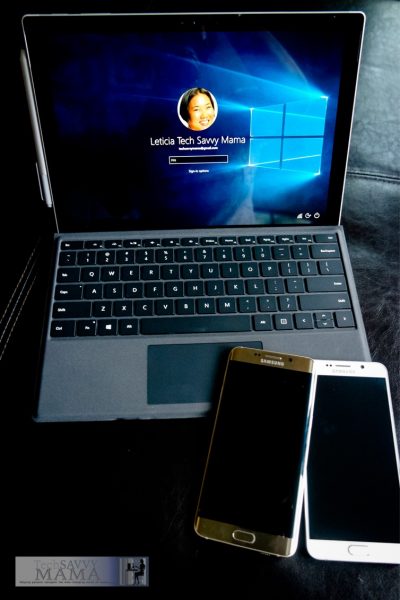This post is sponsored by Corning® Gorilla® Glass
“I’m really sorry, Mom,” Emily said as she carefully picked up pieces of a drinking glass from our kitchen table. “When I knocked it over on the table it just broke. The glass must have already been abraded.”
Abraded isn’t usually part of a teen’s vocabulary but on this particular day Emily was thinking about what she learned when we traveled to Corning, New York and spent some time in the labs comparing the strength, durability, and toughness of Corning® Gorilla® Glass against soda-lime glass, competitor glass, and other various generations of Corning Gorilla Glass.

Over the past year Emily had heard me talk about glass thanks to my work with Corning. She’s watched videos about glass on the Corning® Gorilla® Glass YouTube channel to better understand the science of glass, the ways Corning scientists work to create tough cover glass for the digital devices she’s always using, and the lab tests conducted to test the durability of glass. She’s also audited our family’s devices to figure out some of the products feature Corning Gorilla Glass.

Despite using technology to learn about Corning and Gorilla Glass, nothing could compare to the hands-on lessons she received from Lisa, a Corning scientist when conducting lab tests at Corning’s Sullivan Park Research and Development campus. Corning designs procedures to test glass strength, scratch resistance, and ability to survive drops.
Emily and the Learning Through Corning Gorilla Glass sweepstakes winner, Emma, had the opportunity to test the performance of soda lime (or window glass) against various generations of Corning Gorilla Glass and we thought we’d share what was learned through a virtual field trip that takes you behind the scenes.
Corning scientists develop their own lab tests to test the durability of glass, and given that Corning is a company with a long history of innovation, it was priceless for Emily to interact with Lisa. As a teen who loves science, she learned a lot about the various areas of study that can lead to many different jobs at Corning.

Emily was also fascinated to learn that as a Fractologist, Lisa spends time studying how glass breaks to create a better product!

Emily came home from our trip with a better understanding of why it’s important to have Corning Gorilla Glass as the cover glass on mobile devices. Her time in the lab provided hands-on learning that allowed her to see exactly why what’s on our devices matters and she’s not shy about telling her friends about her experience and why they need to look for a phone, tablet, or laptop featuring Corning Gorilla Glass.

Although this post is sponsored as part of my work with Corning Incorporated, all opinions are my own and based on personal experience.


